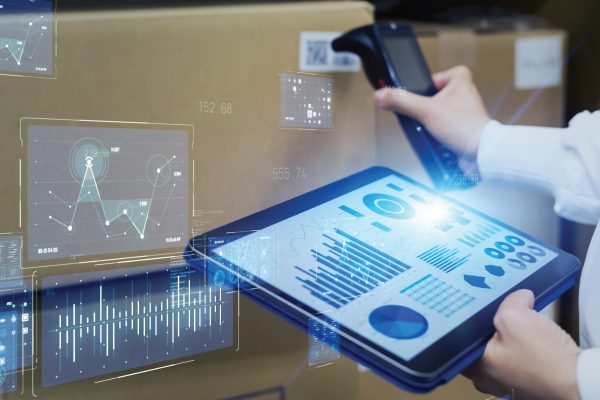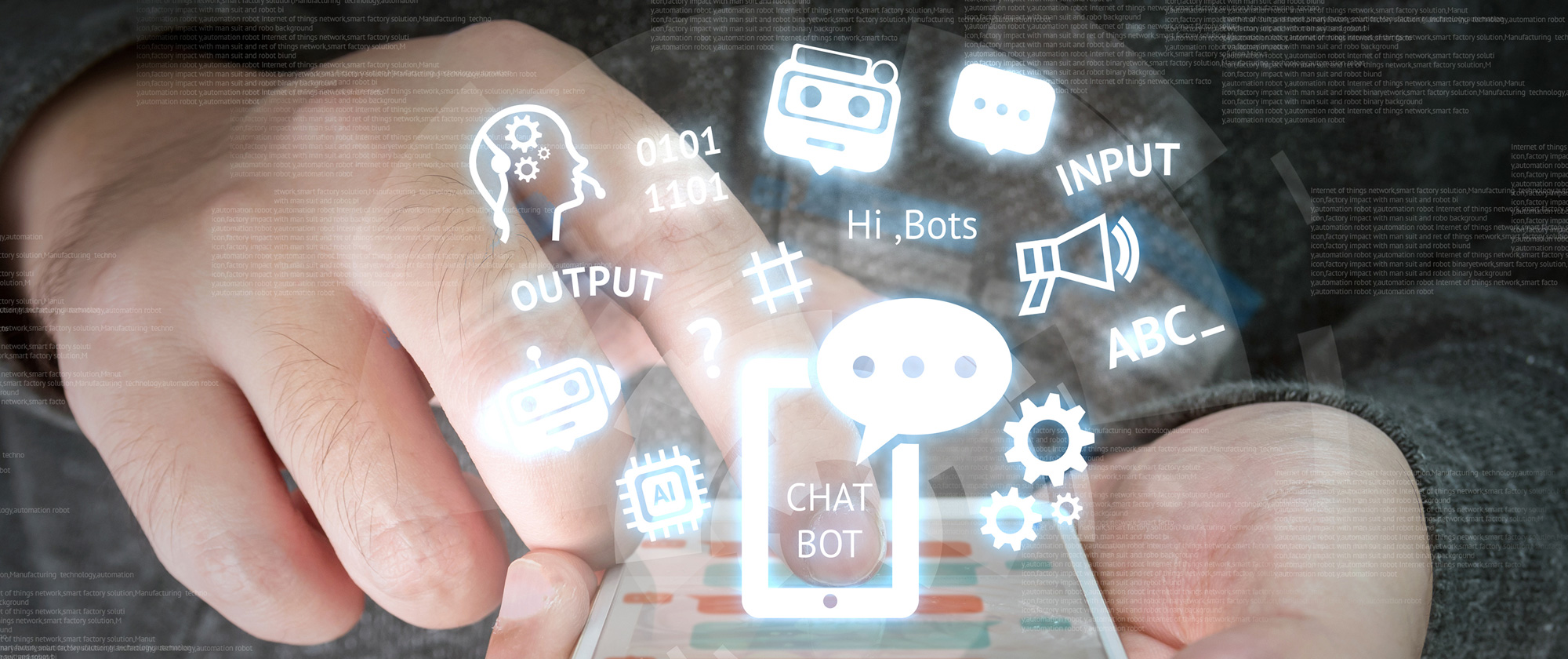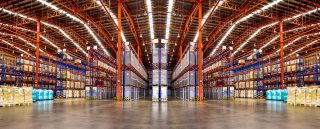Today, innovation and evolution is the key mantra to success. And, the logistics industry is not far behind. The sector is increasing its pace of digital transformation year-on-year. Chatbots have been at the forefront of this digital revolution in the industry. By enhancing customer communications and streamlining supply chain management on several fronts, chatbots are emerging as the futuristic employees that are sure to bring in huge sums of profit for the industry.
The origins of the word “Artificial Intelligence” (AI) can be traced back to 1956 in the USA, where it was used for the first time as a futuristic concept. With the evolution of technology, AI has become a reality and is transforming how businesses function and operate. Chatbots—AI-driven software that simulates conversations with users in natural language through messaging or speech synthesis – is one of the key manifestations of this technology. Chatbots can communicate through audio, text, or both and perform a wide range of functions for the user, such as setting an alarm on the phone, locating the best restaurants within a mile radius, or reading out news. Personal digital assistants like Google Assistant, Siri, and Alexa are some of the well-known and most sophisticated examples of AI.
The trend of chatbots shouldering the responsibility of communicating with customers is only expected to further gain traction in the coming years. Studies estimate that a majority of customer interactions will be handled by computer programs in the coming years, and companies across sectors are betting big on chatbots. Back in 2016, a senior Facebook official had claimed that 33,000 developers had written 34,000 chatbots for the company’s Messenger application alone, to improve its user experience. Now, developers such as Oracle and NVIDIA are taking it a step forward, by betting big on conversational AI.
Logistics as an industry has been infamous for the slow adoption of technology. For long, the logistics sector has been grappling with non-user-friendly interfaces and unhappy user experiences. However, the sector is increasing its pace of digital transformation. Chatbots are already revolutionising the scene, by enhancing customer communications and streamlining supply chain management of several companies in the industry.
How is AI transforming the industry?
What happens when a shipment is delayed in a world controlled by AI? First, the driver arriving to pick the shipment up gets an alert about the delay and receives a new pick-up time. Additionally, the customer awaiting the shipment also gets an alert about the delay and a revised delivery schedule.Finally, the driver is provided a new route map, adjusted based on the projected traffic conditions at his new time of departure.
This is just an example of how AI-based technologies, can help players in the transport and logistics sector streamline a large number of processes—be it management of human relationships, enhancement of customer engagements, or improving the efficiency of the supply chain. Chatbots, in particular have a proven record of boosting revenues for companies in the long run.
Crucial applications of chatbots in the industry —
Enhancing customer interactions
Want to book a delivery? All that a customer has to do is share a picture of the consignment with the chatbot, and answer a few queries about dimensions of the consignment, and the pick-up and delivery addresses. Based on these details, chatbots can automatically schedule a pick-up time and also calculate the payable charges. Customers can choose to make payments over the application or in person at the time of delivery.
Real-time shipment tracking and updates
Tracking the status of shipments has also been made simple. Chatbots can provide real-time information about the status, delivery alerts, and intimation in cases of delays in delivery to customers, through voice calls and text messaging services.
Customer query resolution
Similarly, chatbots have also simplified the process of resolving customer queries. Now, users do not have to browse through the entire website for specific information. They can just post a query on the chatbot and retrieve all relevant information. Chatbots can instantly respond to FAQs, raise tickets in cases of complicated queries, and also gather feedback from customers on the services provided by the company.
Quick response to customer queries
The best part is, customers will no longer have to wait in line for their turn to speak to an executive, or for their mail query to be answered. With chatbots, responses are instant. Responses are also not restricted by office working hours. Chatbots provide instant responses to queries 24×7, at much less cost compared to having a large servicing team working round the clock. This benefits users interacting from different time zones.
Chatbots – Futuristic employees boosting profitability
An Oracle survey claims chatbots contributed to enterprise cost savings of an estimated USD 20 million in 2017. The savings by companies are likely to cross USD 8 billion per annum by 2022. This is because chatbots reduce the workload of customer service teams by a large measure, freeing them up for more important tasks that require human intervention.
This advantage is not restricted to just customer service. AI and chatbots can improve efficiencies across functions and departments, such as human resource management, knowledge management, and supply chain management. For instance, chatbots can manage human resources in the warehouse by preparing the roster and fleet schedules.
In the supply chain functions, in case a key manager is unavailable during a complex task that requires expert knowledge, chatbots can give step-by-step instructions to guide other employees to execute the operation, based on the data stored in it. Similarly, it can also help workers tide over human errors. When synced with transport management systems, chatbots can alert drivers when the given delivery address is wrong, and use stored data to spot the exact location.
To look up the nature of customer queries being addressed on a daily basis, executives only have to browse through the chat records of chatbots. It logs the details of the nature of queries, frequency, and even the geographical location of customers. The chat records are a potential source of sales leads in many companies.
The early adopters
Several companies have invested considerable resources in this technology. Oracle and NVIDIA have built bots that provide the conversational user experience. They work on web browsers, mobile apps, and on voice and text messaging channels.
Multinational supply chain management company UPS engages such a conversational chatbot that works through the Google Assistant service. Customers can now talk with the UPS chatbot using their Google Home speakers. Interestingly, this chatbot can answer queries without having to look up the customer’s tracking number. It simply pulls up customer data from the UPS database by syncing with UPS My Choice application.
The U.S. National Railroad Passenger Corporation, Amtrak, says it got 25% more bookings after it unleashed ‘Julie’, a chatbot designed to guide customers through the booking process. Similarly, the Indian logistics platform Courierhome says its chatbot helped the company interact with about 1000 customers at one go without having to invest in a large-sized customer service team.
Similarly, Dubai-based logistics company Aramex has launched a chatbot service through a popular messaging application, WhatsApp. Users can track and trace their shipment or find the nearest Aramex outlet using the service through WhatsApp. The company is looking to customise the service further going forward, by providing customers with the option of sharing live location, or adding delivery instructions, and scheduling their delivery, all through WhatsApp.
These are just a few examples of how AI and chatbots are changing the way the game is played in the transport and logistics industry. When combined with other futuristic technologies, such as transport management software or autonomous driving applications, AI has the potential to usher in an era of complete automation of several functions in the industry.
About the author: Sathyanarayana Kabirdas is Director – Mobility Research – with Frost & Sullivan. His area of expertise is Connected Fleet market. He has more than 18 years of automotive industry experience, which includes 14 years of market research and consulting experience. He specialises in cross profile experience — expertise in research, quality and manufacturing in automotive domain, strategic recommendation — growth consulting in advanced automotive technologies market and analysis — competitive and end-user analysis and benchmarking.














